Scaphoid waist fracture
Definition
Scaphoid waist fractures may be:
- Simple (AO/OTA 72B(b))
- Multifragmentary (AO/OTA 72C(b))
Besides the AO/OTA, the Herbert classification is most often used to describe scaphoid fractures.
A simple transverse or oblique fracture of the distal third of the scaphoid (Herbert type B1) can be described as a distal pole fracture (AO/OTA 72B(c)). This should be distinguished from a tubercle avulsion fracture.
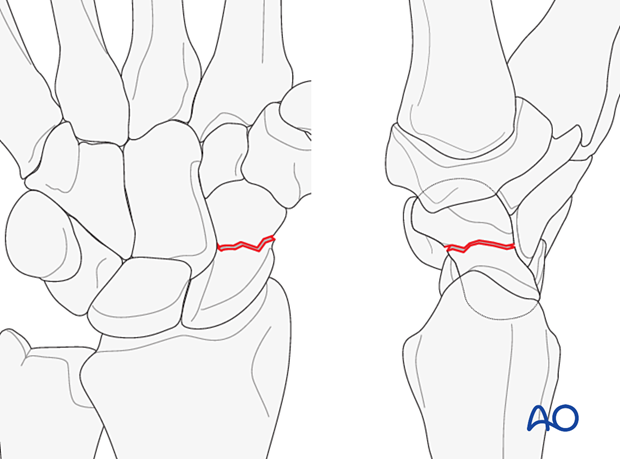
Most waist fractures are transverse. Some fractures may be oblique in the horizontal or vertical plane.
Multifragmentary fractures are less common. They can be simple wedge fractures or comminuted.
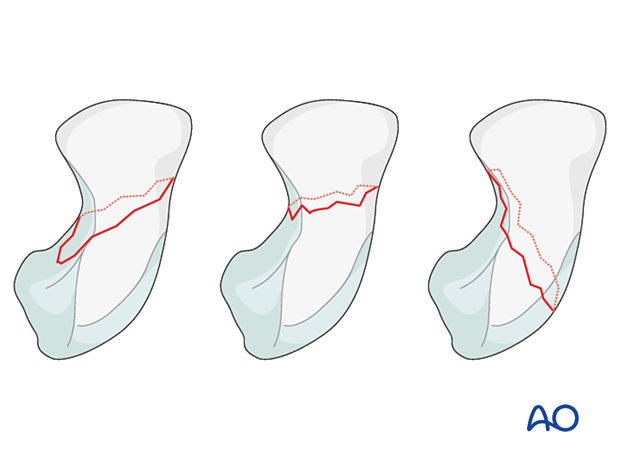
Characteristics
Scaphoid fractures are the most common carpal fractures. Debate continues about the management of these fractures. Questions remain about several issues including scaphoid vascularity, clinical and radiological diagnosis, and treatment options.
Fracture displacement forces
In displaced fractures of the scaphoid waist, the distal pole tends to rotate into flexion in relation to the proximal pole, the lunate, and the triquetrum, which lie in extension. This can create a rotational and angular deformity at the fracture site – the so-called “humpback deformity.”
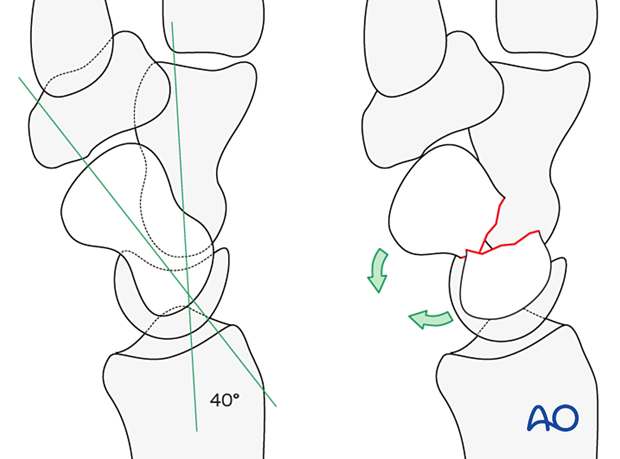
Imaging
Conventional x-rays do not always show the fracture.
The lines show:
- Distal scaphoid fragment (orange)
- Proximal scaphoid fragment (green)

A CT scan may be helpful to confirm the diagnosis and show the extent of any displacement.
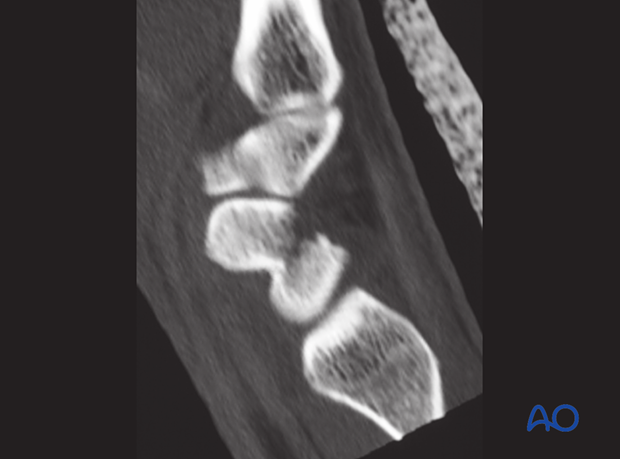
In this case, the PA x-ray shows only a tiny fracture of the proximal pole of the scaphoid and does not adequately demonstrate the oblique waist fracture configuration.
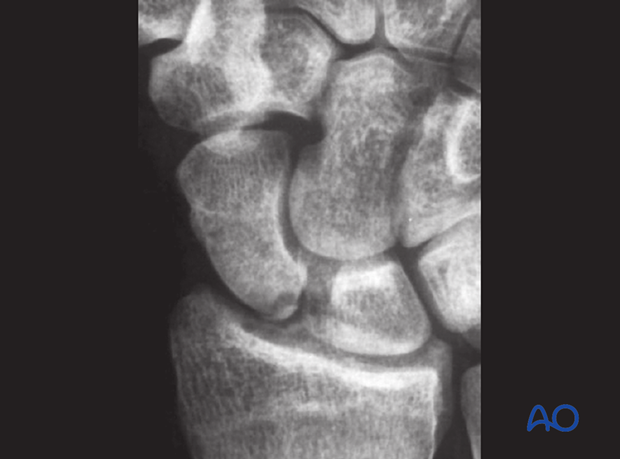
CT scans in the longitudinal axis of the scaphoid show the fracture at the proximal pole. The sagittal view (on the right) shows that the fragment is larger than might be assessed on the PA x-ray.
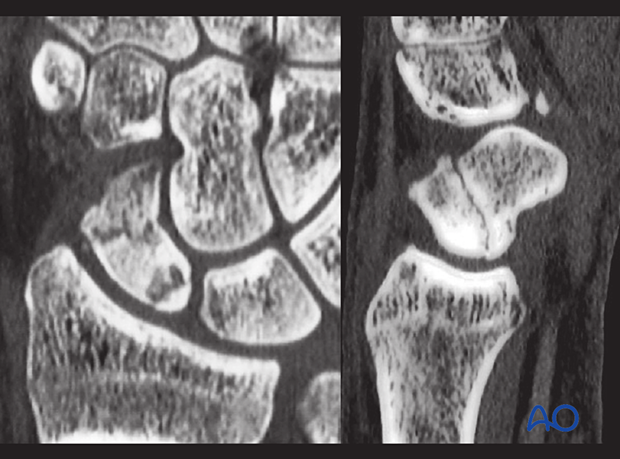
Pitfall: isolated vs complex carpal injuries
Vascularity
The blood supply of the scaphoid is derived from two sources.
The primary source is a group of vessels entering the dorsal surface of the distal pole. This is the most significant contribution to the vascularity of the scaphoid. For this reason, the proximal pole relies on a retrograde blood flow.
The second group of vessels enters the palmar aspect of the distal pole. These vessels contribute to a lesser degree to the vascularity of the distal third of the scaphoid.














